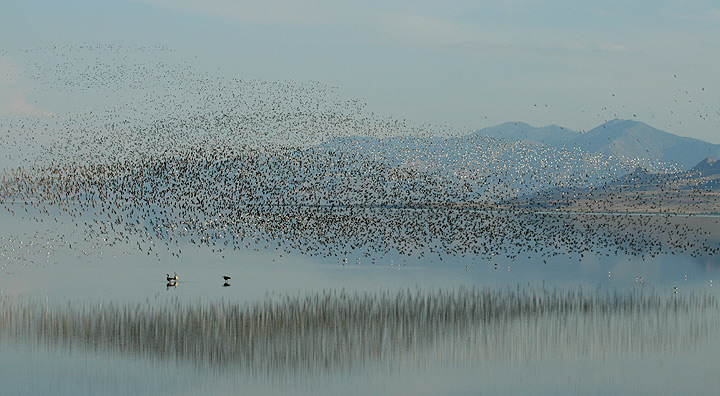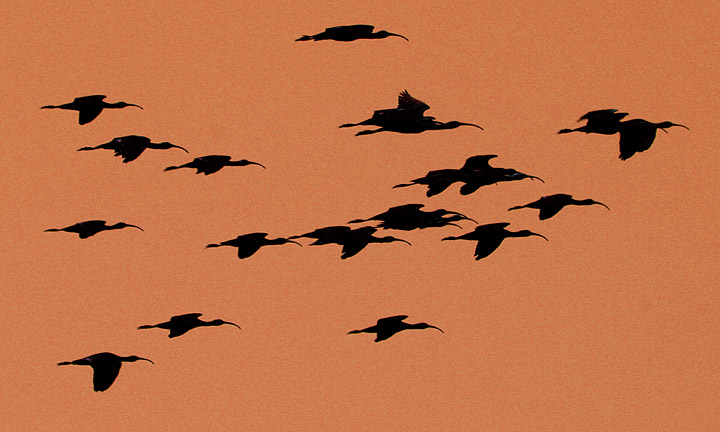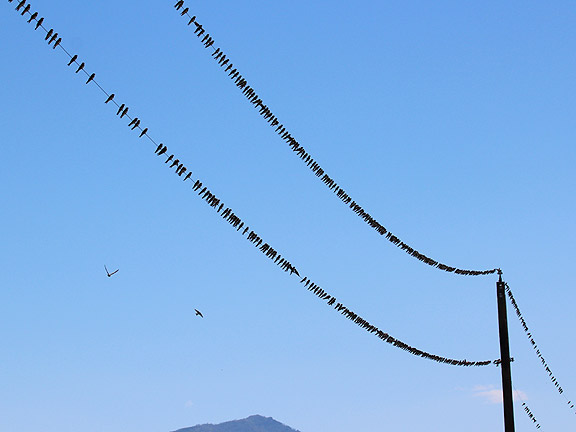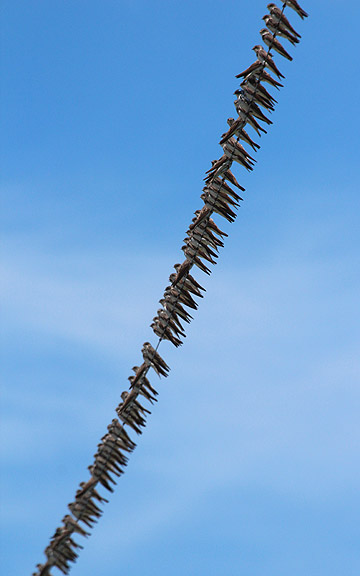It's the middle of August and if you have been out birding lately, you may have noticed a number of species "flocking up" for fall migration. In particular some very easy to see and abundant species found along the Wasatch Front and the Great Salt Lake are gathering in somewhat staggering numbers. This ritual takes place each fall as the birds prepare, or are on their way south for the winter.

Wilson's Phalarope can be found right now along the Antelope Island Causeway in what could be described as unimaginable numbers. So many birds, as far as the eye can see that it almost doesn't seem real. 500,000; maybe a million birds all within viewing distance of the road does seem unimaginable, but it's real, and happens each year.
White-faced Ibis are typically found around the edges of fresh water marshes this time of year, anywhere with food will suffice. If you were to drop by the south end of Utah Lake you might see hundreds or thousands in flocks devouring everything in sight, getting ready to lift off and head south. Often this time of year, one can visit the Salt Lake International Center in the evening, and see flock after flock of ibis leaving the Great Salt Lake area and heading south out over the Salt Lake Valley. It's kind of a cool experience to watch.
Bank Swallows are very particular about where they nest. During the breeding season, unless you visit a colony, this species can be hard to find in Utah. During migration they are far more common and often seen in flocks of 1,000's of birds. Along the Antelope Island Causeway and other roads with a high density of insects for the taking you may see fences, power lines, and road barriers covered in swallows as they rest between forays to feed. Just yesterday I saw close to a 1,000 on a random side road in Utah county where most of the year any swallow would be hard to find.
So why do these birds flock up? There are a couple of theories that are widely believed to be true. For starters some believe that when in flight, the shape a flock makes may make be more aerodynamic than a single bird in flight, saving energy for individuals as the mass moves together. Another common belief is that safety comes in numbers. It is true that if you are alone on a journey you may be a far easier target, than 1 in a 1000 traveling together. Yet a third theory is that it may be easier for a larger group of birds to find food than an individual. With more mouths and eyes in search of food, it could make it easier to find the energy filled fuel these birds are in need of for their trips.
What are some of your favorite "flocking" experiences with birds?
Labels: migration, shorebirds, swallows, waders





2 Comments:
Surely one of the notable gatherings here in Utah is of Eared Grebes on the Great Salt Lake in the fall. Seeing 1000s upon 1000s of those grebes covering the water in every direction is a sight to behold.
A couple of years ago at Antelope Island, when Bonaparte's Gulls were flocking at the last bridge and a Little Gull, Sabine's Gull, and Black-legged Kittiwake were found in the flock as well, all on the same day, it was pretty amazing. People were literally applauding every time that Little Gull took flight and showed the jet-black underwings. Great memory.
Post a Comment
Subscribe to Post Comments [Atom]
<< Back to Previous